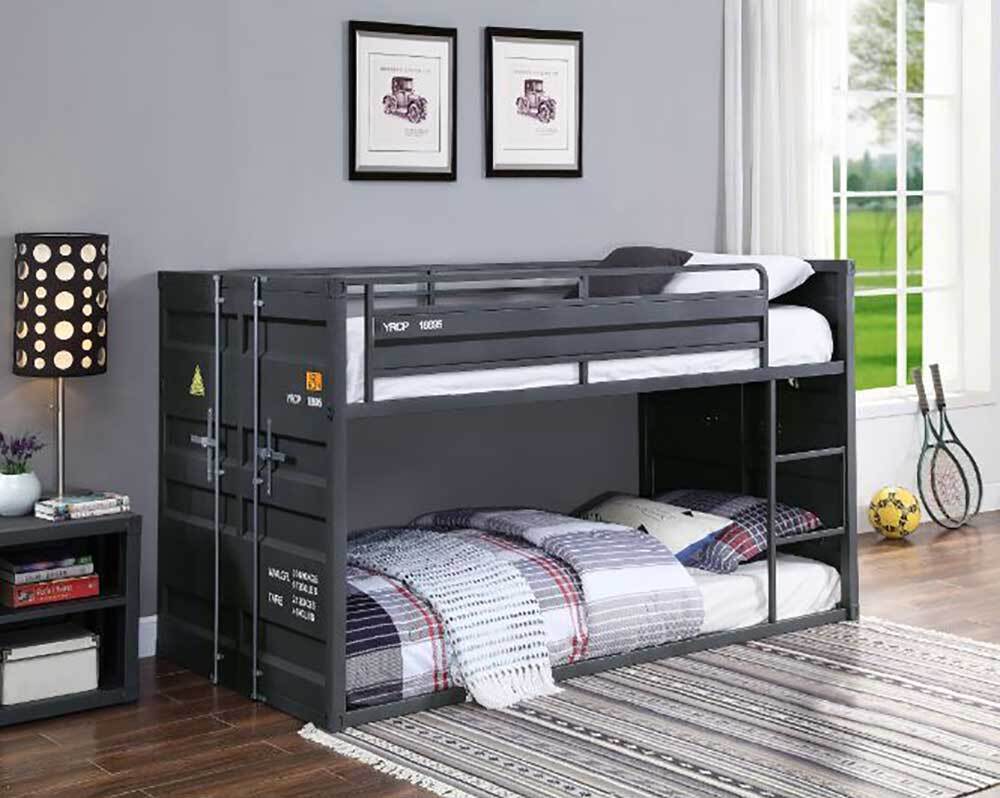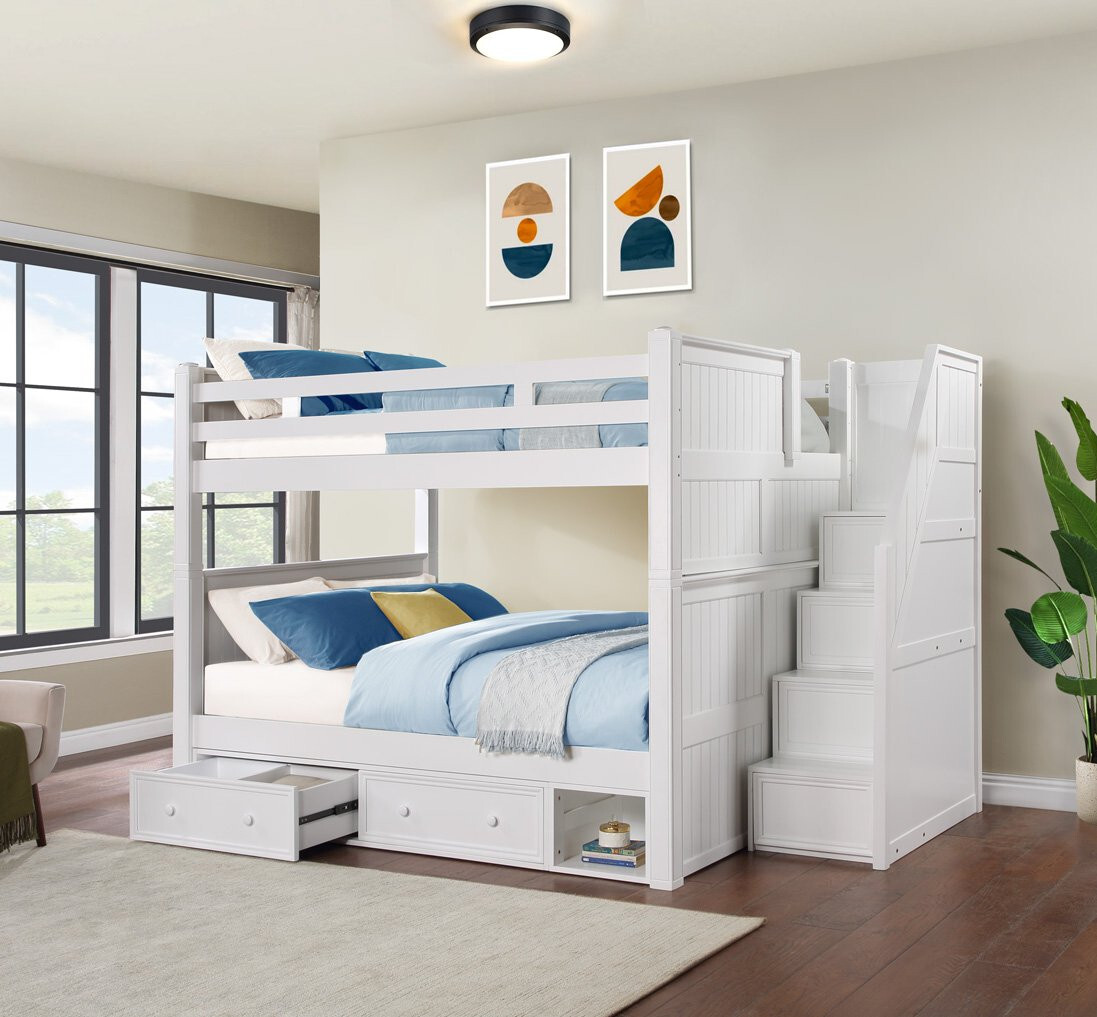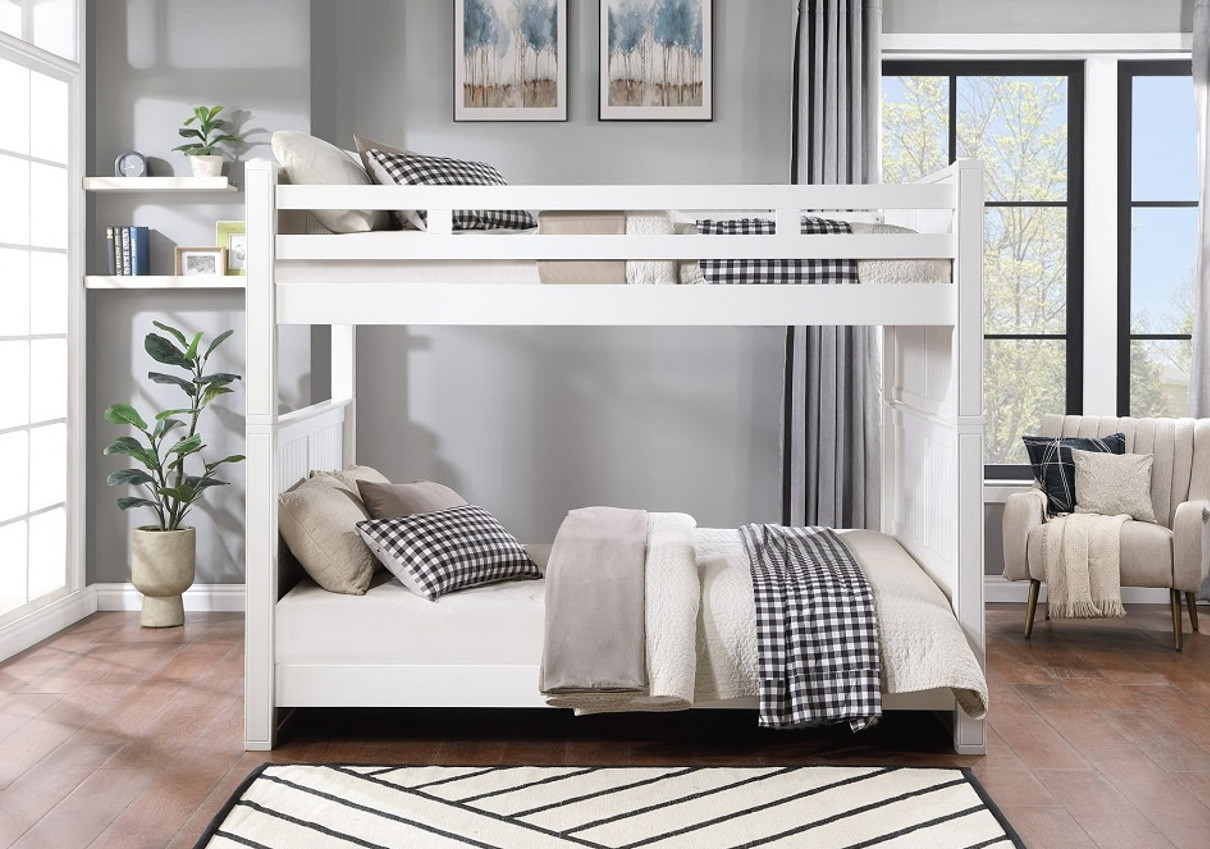When Should Kids Start Sleeping on Bunk Beds?
Posted by UPW on Apr 14th 2025

Bunk beds offer a practical way to make the most of limited floor space, especially in shared kids’ rooms, vacation homes, or compact family dwellings. Their stacked structure allows multiple sleeping areas without adding clutter, making them a common choice for households balancing comfort and space efficiency. But unlike standard beds, bunk beds come with added height, ladders, and elevated sleeping surfaces—all of which introduce new safety concerns, particularly for younger users.
Determining the right age for a child to safely use a bunk bed isn’t just about their size—it’s about coordination, judgment, and consistent behavior. Parents also need to factor in the type of bunk bed, how it will be used, and who it will be shared with. So, what factors should you look for when deciding if your child is ready for a bunk bed—and how do you make that decision confidently?
General Safety Considerations for Bunk Beds
The safety of bunk beds begins with their structure and how well they are constructed. Models intended for children typically include built-in safeguards such as upper guardrails, stable ladders or stairs, secure fasteners, and mattress height recommendations, all designed to prevent falls and entrapment.
Reputable manufacturers build their beds to comply with voluntary safety standards set by organizations like ASTM International (F1427) and enforced under regulations from the Consumer Product Safety Commission (CPSC). These standards outline precise requirements, such as minimum guardrail height (at least 5 inches above the mattress surface) and maximum spacing between slats or other openings (no more than 3.5 inches).
Are Bunk Beds Safe for 4-Year-Olds?
Not every level is suitable for younger children. At age four, kids can safely use the bottom bunk, but the top bunk should only be used by an older sibling who meets age and maturity guidelines. Preschoolers typically lack the coordination, balance, and judgment needed to climb safely—especially if they wake during the night or act impulsively.
The bottom bunk can still work well for younger children, especially if it’s part of a low-profile frame with built-in guardrails or enclosed sides. Look for models with wide, stable stairs instead of steep ladders, and always follow the manufacturer’s age guidelines for both bunks to ensure each child is sleeping in a way that matches their physical readiness.
When Can a Child Sleep in a Bunk Bed?
According to the Consumer Product Safety Commission (CPSC) and the American Academy of Pediatrics (AAP), children under 6 should not use the top bunk due to a higher risk of falls and injury.
Most kids begin to show the physical and cognitive readiness needed around age 6, but individual signs of maturity and coordination matter just as much as the number. Parents should assess their child’s behavior, skills, and sleep habits before making the transition.
Signs your child may be ready to sleep on the top bunk:
- Consistent nighttime behavior: Children who sleep through the night without wandering or needing frequent help are more likely to use a top bunk safely.
- Strong balance and coordination: Your child should be able to climb up and down stairs or ladders with ease, without hesitation or assistance.
- Ability to follow rules: Understanding and obeying safety instructions—such as no leaning over the guardrails or playing on the upper bunk—is essential.
- Spatial awareness: Children should have a clear sense of height and understand the risks of falling or jumping from elevated surfaces.
- Comfort using elevated spaces: If your child regularly uses lofts, play structures, or tall furniture confidently, they may be more prepared for an upper bunk.
- Clear communication skills: Your child should be able to tell you when they feel unsafe, unwell, or unsure about climbing up or down.
If your child has difficulty climbing independently, wakes frequently during the night, or struggles to follow basic rules about bed safety, they may not be ready for the top bunk just yet. Parental judgment plays a key role in evaluating whether your child is truly suited for elevated sleeping.

Incidence of Accidents: How Often Do Kids Fall from Bunk Beds?
Bunk beds are commonly used in homes with multiple children, but they do come with safety risks if misused or introduced too early. Understanding how and why accidents happen can help you make better decisions about when your child is ready—and what precautions are worth taking.
National data shows that most bunk bed injuries are preventable and often linked to behavior, age, or missing safety components. Knowing what contributes to these incidents can help you avoid the same pitfalls in your home.
- Top Bunk Falls: The most common cause of injury is falling from the top bunk, especially during sleep or when climbing up or down without supervision. These incidents are most frequently reported among children under the age of 6.
- Head and Neck Injuries: Emergency room data shows that head, face, and neck injuries are the most frequent outcomes—often resulting from a child rolling off the top bunk or falling during nighttime movement.
- Improper Use of Ladders: Many accidents occur when children misuse or rush up and down the ladder, particularly if it isn’t firmly secured or lacks wide, slip-resistant rungs.
- Playing on the Bed: Roughhousing, jumping, or hanging off the frame are common behaviors that can lead to accidents. Beds not designed for active play are more likely to shift, tip, or fail at connection points.
- Lack of Guardrails: Missing or poorly fitted guardrails increase the risk of rollover accidents, especially when children sleep near the edge or shift positions during the night.
- Unsuitable Age Use: A large percentage of bunk bed injuries involve children who aren’t yet developmentally suited for top bunk use.
- Structural or Assembly Issues: Bunk beds that are poorly assembled, missing bolts, or set up on uneven flooring can contribute to instability and increase the risk of tipping or collapse.
While the injury numbers may seem concerning, most bunk bed-related accidents stem from preventable situations. Following manufacturer age guidelines, securing ladders and guardrails properly, and monitoring how your child interacts with the bed can significantly reduce risks. When your child is developmentally ready and the bed is installed with care, a bunk bed can be a safe and reliable addition to your home.

Essential Safety Tips for Bunk Beds
Beyond structural quality, daily behaviors and setup choices have a direct impact on your child’s safety—particularly when climbing, sleeping, or playing nearby. Thoughtful setup and clear routines can make a significant difference in reducing injury risks, especially in shared rooms or homes with multiple young users. Focusing on how your child interacts with the bed helps ensure that the top and bottom bunks remain secure, comfortable, and injury-free.
- Guardrail Coverage - Every top bunk should have guardrails on all four sides—even along the wall-facing edge—to reduce the risk of falls. This ensures that your child is protected regardless of their sleeping position or how much they shift during the night.
- Proper Mattress Thickness - The mattress on the top bunk should match the manufacturer’s height recommendation, typically no more than 6–7 inches thick. A mattress that’s too tall can eliminate the protective height of the guardrails.
- Stairs vs. Ladders - Bunk beds with stairs provide a safer ascent for children who are still building balance and coordination. Beds with built-in stairs often include integrated handrails and storage drawers, which make climbing easier while adding functional storage for linens, toys, or books.
- Routine Hardware Checks - Movement, climbing, and daily use can loosen bolts and joints over time. Checking all connection points every few months or after moving the bed helps prevent frame instability and preserves the structural integrity of the bunk bed.
- Clear Behavioral Boundaries - Your child should understand the basic bunk bed rules: no jumping, no roughhousing, and no leaning over the rails. These guidelines may sound simple, but reinforcing them regularly—especially during playdates or sleepovers—helps maintain long-term safety.
- Shoes or Grip Socks for Climbing - Climbing barefoot can lead to slips, especially on metal ladders or smooth wooden steps. Encourage your child to use grip socks or soft-soled shoes when going up or down to reduce the risk of losing footing.
- Clear Floor Area - Keep the area around the bed—particularly near the ladder or base—free from toys, furniture, or clutter. This ensures a safer landing zone in the event of a slip and also reduces the likelihood of tripping when entering or exiting the bed.

When choosing your child’s bunk bed, think beyond the frame—daily safety comes down to small but consistent habits. Encourage your child to treat the bed with care, and inspect it periodically to catch any early signs of wear. Creating a routine around how the bed is used helps support a safe and comfortable experience for years to come.
At Just Bunk Beds, we specialize in thoughtfully engineered bunk beds for adults and children alike, offering a wide range of models that combine safety, comfort, and durability. Explore our collection or contact us for personalized guidance—we’re here to help you choose a bunk bed that meets your needs now and adapts with your family’s future.

